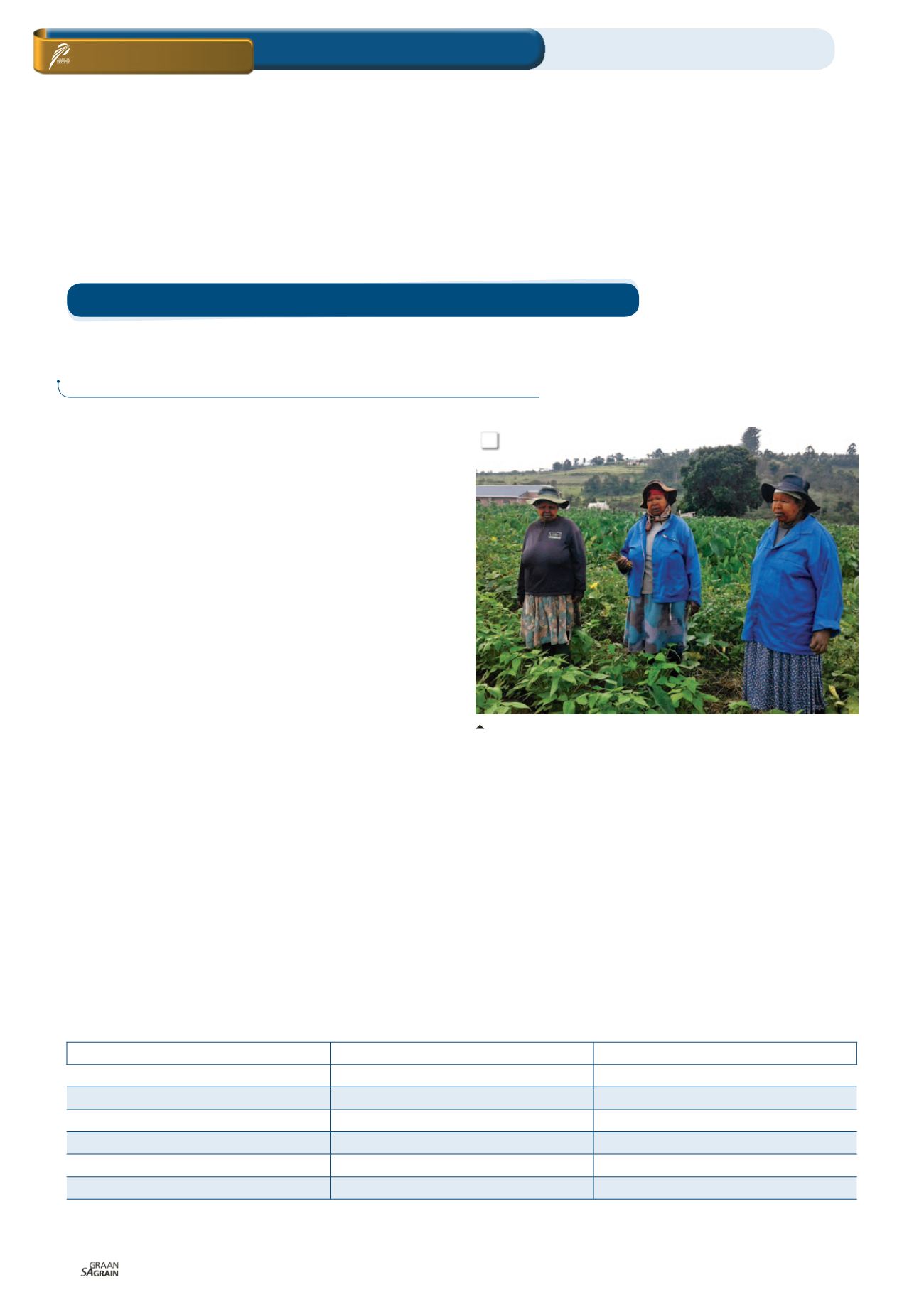

September 2018
90
Conservation agriculture
in smallholder farming systems
T
he densely populated Swayimane area situated 40 kmoutside
Pietermaritzburg under the uMshwathi Local Municipality is
well-known for vibrant subsistence farming communities.
Crop production is dominant in most farming systems and
the smallholder farmers mainly grow maize, beans, amadumbe,
sweet potato and sugarcane.
Animals are used for land preparation, meat and dairy, as well as
during ceremonies. Maize is a staple food in Swayimane and SC 701
is the most widely used variety, which is sold as green mealies to
local traders.
The Grain SA Conservation Agriculture (CA) smallholder farmer
innovation programme (SFIP) is in its first season in Swayimane with
the aim to promote and investigate sustainable maize production.
As part of the expansion of the CA farmer innovation programme,
four new learning groups have been established, one situated in
Gobizembe area and three in the Mayizekanye area.
Programme implementation is farmer centred, meaning farmers
are actively involved in education and training, and trials are
planted by each participant at household level as part of an on-farm
experimentation process central to farmer learning and adaptation.
All participants have planted first level trials which consisted of
maize plus bean and maize plus cowpea intercropping treatments.
Owing to the fact that many of the farmers have large fields with
semi-commercial enterprises, the two-row no-till planter was used
on one of the bigger fields to demonstrate the potential of CA on a
commercial scale.
The main challenges identified were uneven growth and a preva
lence of weeds and pests, particularly stalk borer. The varieties
planted in the current season are PAN 53 and PAN 6479 for maize,
Gadra beans and mixed brown cowpeas, which have proved to be
well adapted to the area.
Swayimane, which forms part of the KwaZulu-Natal Midlands CA
SFIP, is very promising as far as the promotion of CA is concerned,
partly because it has a high potential for maize production where
most of the farmers are established maize farmers who supply the
local market.
Case study of Dumazile Nxusa
Mrs Dumazile Nxusa is a 66-year-old female farmer who resides in
Mayizekanye with her two sisters, Khonza and Mathemba, and five
on farm level
Smallholder farmer innovation programme
Conservation agriculture
Temakholo Mathebula, Erna Kruger,
Mahlathini Development Foundation and
DR Hendrik Smith,
conservation agriculture facilitator, Grain SA
Case study from Swayimane, KwaZulu-Natal Midlands
VILLAGE
FARMERS WHO PLANTED (1
ST
LEVEL)
EXPERIMENTATION (CA TREATMENTS)
Cornfields 1
13
Intercropping M + B, M + C
Mayizekanye 1
8
Intercropping M + B, M + C
Mayizekanye 2
9
Intercropping M + B, M + C
Mayizekanye 3
8
Intercropping M + B, M + C
Gobizembe
9
Intercropping M + B, M + C
Total
34
M = maize
B = beans
C = cowpeas
TABLE 1: SUMMARY OF FARMER INNOVATION NUMBER AND AREAS PLANTED PER VILLAGE IN THIS CA PROCESS; KWAZULU-NATAL
MIDLANDS, 2017 - 2018.
1: Dumazile Nxusa (centre), Khonza Nxusa (left), Mathemba Nxusa
(right), CA participants from Mayizekanye.
1
















